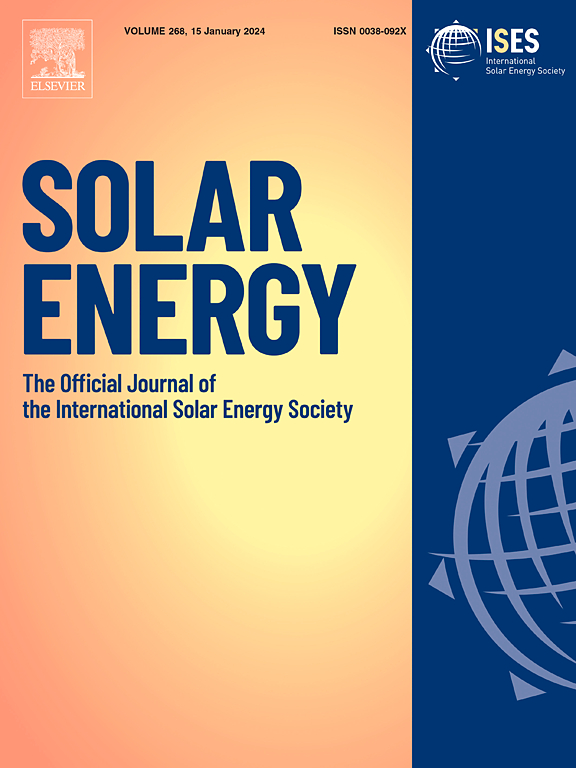Role of MoS2 and MoSe2 thin films in performance of new-generation CMTSe solar cells fabricated by a quasi-co-evaporation method
IF 6
2区 工程技术
Q2 ENERGY & FUELS
引用次数: 0
Abstract
In this paper a new quasi-co-evaporation method is used to fabricate the absorber layer of CMTSe solar cells. The crystallographic and morphological properties of the fabricated layer are experimentally investigated by XRD and SEM-EDS analyses, while also studying the role of the intermediate layer formed on Mo/CMTSe surface using SCAPS-1D. The SEM and XRD results show integrated growth of the CMTSe absorber layer, showing a stannite crystal structure with optimal intensity, which indicates the achievement of phase-pure growth and crystal structure with the desired crystal quality and optimal composition. The crystallite size and lattice strain are calculated to be 60 nm and 0.8 % based on the Scherrer equation and applying the Williamson-Hall methods, respectively. The band gap of the CMTSe absorber layer is obtained to be 1.25 eV using Tauc plot derived from DRS analysis. By inserting structural parameters of the fabricated layer into the SCAPS-1D simulation, the role of MoS2 and MoSe2 interface layers in the solar cell performance is investigated. In general, while the n-type MoS2 and MoSe2 layers plays a destructive role in the cell performance, the p-type MoS2 and MoSe2 layers improve it by enhancing the internal field. The best parameters (Voc: 0.75 V, Jsc: 45.23 mA/cm2, FF: 76.2 %, and Eff: 26.1 %) are obtained for the solar cell with p-MoSe2 interlayer.
MoS2和MoSe2薄膜对准共蒸发法制备新一代CMTSe太阳能电池性能的影响
本文采用准共蒸发的方法制备了CMTSe太阳能电池的吸收层。利用XRD和SEM-EDS对制备层的晶体学和形貌进行了实验研究,同时利用SCAPS-1D研究了在Mo/CMTSe表面形成的中间层的作用。SEM和XRD结果表明,CMTSe吸收层整体生长,呈现出最优强度的锡酸盐晶体结构,表明实现了相纯生长和具有理想晶体质量和最优成分的晶体结构。根据Scherrer方程和Williamson-Hall方法计算得到晶体尺寸为60 nm,晶格应变为0.8%。利用DRS分析得到的Tauc图,得到CMTSe吸收层带隙为1.25 eV。通过将制备层的结构参数插入到SCAPS-1D模拟中,研究了MoS2和MoSe2界面层对太阳能电池性能的影响。总的来说,n型MoS2和MoSe2层对电池性能有破坏作用,而p型MoS2和MoSe2层通过增强内部场来改善电池性能。得到了p-MoSe2夹层太阳能电池的最佳参数(Voc: 0.75 V, Jsc: 45.23 mA/cm2, FF: 76.2%, Eff: 26.1%)。
本文章由计算机程序翻译,如有差异,请以英文原文为准。
求助全文
约1分钟内获得全文
求助全文
来源期刊

Solar Energy
工程技术-能源与燃料
CiteScore
13.90
自引率
9.00%
发文量
0
审稿时长
47 days
期刊介绍:
Solar Energy welcomes manuscripts presenting information not previously published in journals on any aspect of solar energy research, development, application, measurement or policy. The term "solar energy" in this context includes the indirect uses such as wind energy and biomass
 求助内容:
求助内容: 应助结果提醒方式:
应助结果提醒方式:


